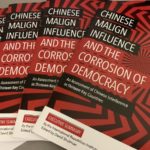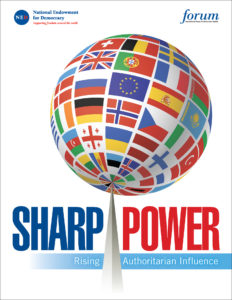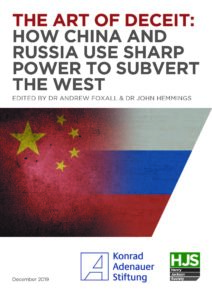
IRI
To counter foreign influence campaigns’ efforts to undermine democratic institutions, a new report calls for strengthening government partnerships with social media and technology companies, and doing better at identifying and deterring those activities, The New York Times reports:
The National Counterintelligence Strategy document comes as U.S. officials warn about Russian influence campaigns aimed at shaping public opinion ahead of the 2020 election and about Chinese efforts to pilfer American technology for Beijing’s economic gain…. The strategy consists of five objectives, including protecting critical infrastructure like electrical grids, countering foreign hacking and intelligence operations, and safeguarding U.S. supply chains so foreign countries can’t compromise them with malicious software or surveillance technology.
 Foreign threat actors— including nation-states, organizations, and individuals—are conducting malicious influence campaigns – what the National Endowment for Democracy (NED) describes as sharp power – using cyber operations, media manipulation, covert operations, and political subversion to sow divisions in our society, undermine confidence in our democratic institutions, and weaken our alliances. Such actors have become more dangerous because, with ready access to advanced technology, they are threatening a broader range of targets at lower risk, the report adds, citing three principal trends:
Foreign threat actors— including nation-states, organizations, and individuals—are conducting malicious influence campaigns – what the National Endowment for Democracy (NED) describes as sharp power – using cyber operations, media manipulation, covert operations, and political subversion to sow divisions in our society, undermine confidence in our democratic institutions, and weaken our alliances. Such actors have become more dangerous because, with ready access to advanced technology, they are threatening a broader range of targets at lower risk, the report adds, citing three principal trends:
- The number of actors targeting the United States is growing. Russia and China operate
globally, use all instruments of national power to target the United States, and have a broad range of sophisticated intelligence capabilities. Other state adversaries such as Cuba, Iran, and North Korea; non-state actors such as Lebanese Hizballah, ISIS, and al-Qa’ida; as well as, transnational criminal organizations and ideologically motivated entities such as hacktivists, leaktivists, and public disclosure organizations, also pose significant threats. … - Threat actors have an increasingly sophisticated set of intelligence capabilities at their disposal and are employing them in new ways to target the United States. The global availability of technologies with intelligence applications—such as biometric devices, unmanned systems, high resolution imagery, enhanced technical surveillance equipment, advanced encryption, and big data analytics—and the unauthorized disclosures of U.S. cyber tools have enabled a wider range of actors to obtain sophisticated intelligence capabilities previously possessed only by well-financed intelligence services. These technologies have opened up new opportunities for adversaries to use information as a strategic resource in achieving their economic security aims, and exert leverage over their competitors.
 Threat actors are using these capabilities against an expanded set of targets and vulnerabilities. Foreign intelligence entities are targeting most U.S. government departments and agencies—even those without a national security mission—as well as national laboratories, the financial sector, the U.S. industrial base and other private sector and academic entities. Some adversaries are conducting intelligence operations to exploit, disrupt, and damage U.S. and allied critical infrastructure and military capabilities during a crisis. RTWT
Threat actors are using these capabilities against an expanded set of targets and vulnerabilities. Foreign intelligence entities are targeting most U.S. government departments and agencies—even those without a national security mission—as well as national laboratories, the financial sector, the U.S. industrial base and other private sector and academic entities. Some adversaries are conducting intelligence operations to exploit, disrupt, and damage U.S. and allied critical infrastructure and military capabilities during a crisis. RTWT
Evanina, the center’s director, said the past year has seen gains in information-sharing between security agencies and private companies as well as research institutions on threats but no letup in foreign entities trying to steal secrets or influence U.S. public opinion, The Wall Street Journal adds. “The amount of foreign intelligence activity against us is so numerous,” Mr. Evanina said, that at times it seems like background “noise.”
The agency noted that Russia remains a threat to the “security of our elections,” while China is more focused on “stealing our technology and intellectual property in an effort to erode United States economic and military superiority,” The Hill notes.







